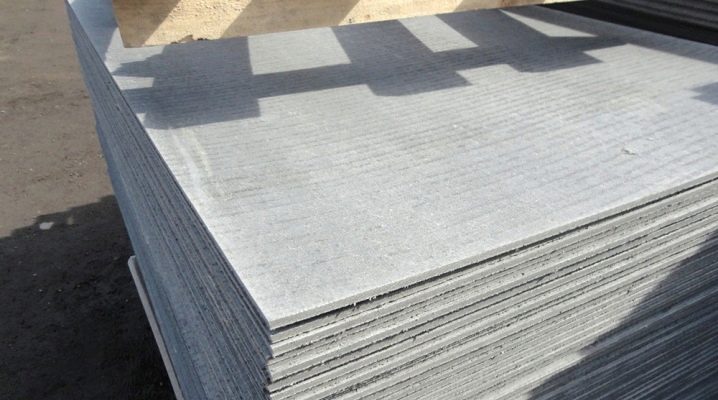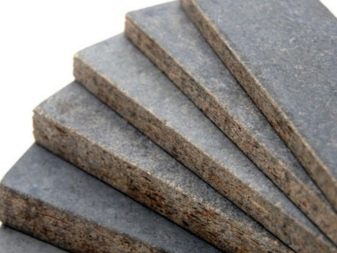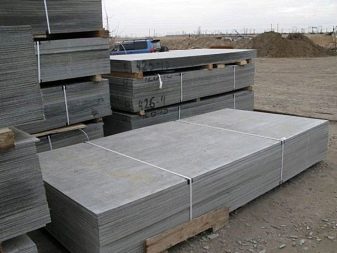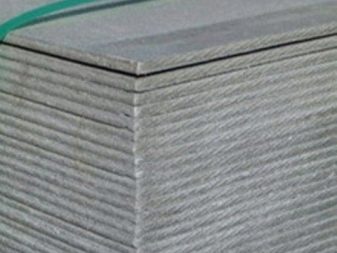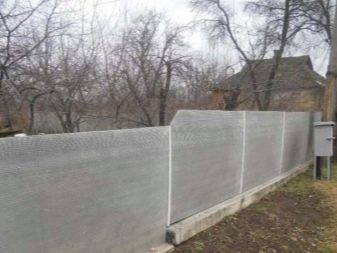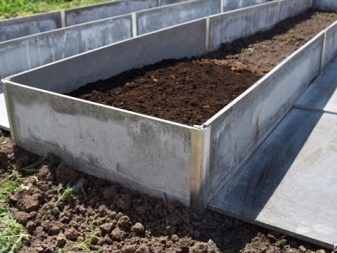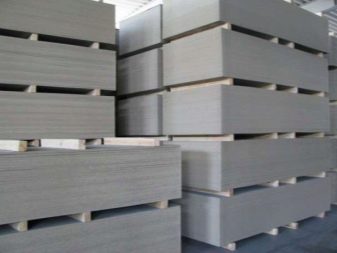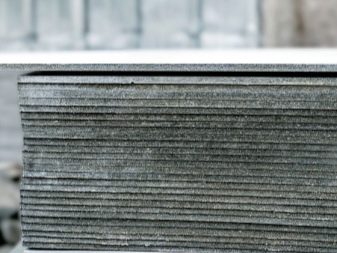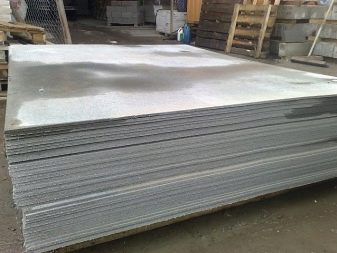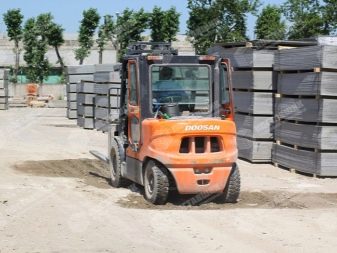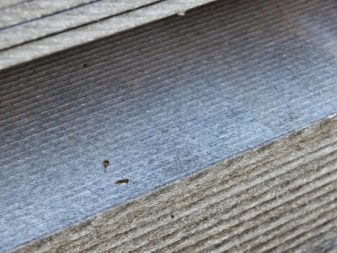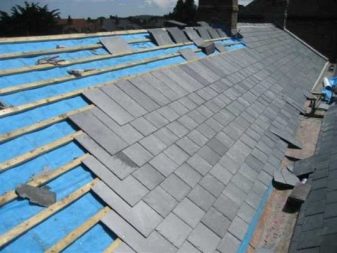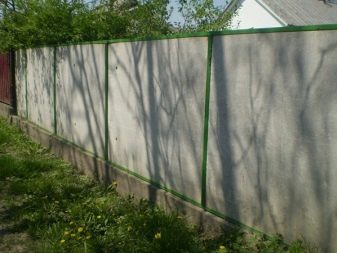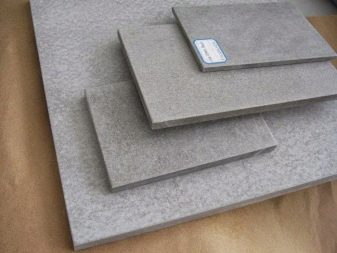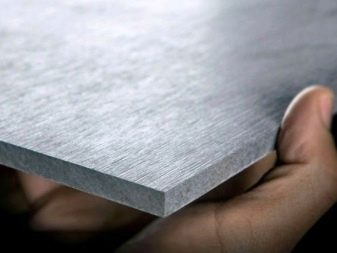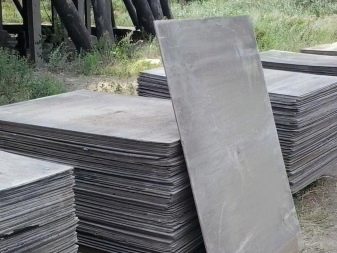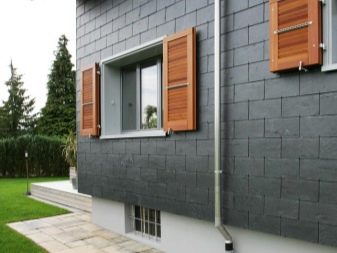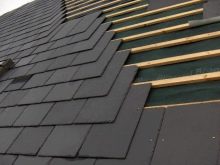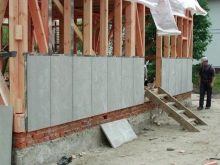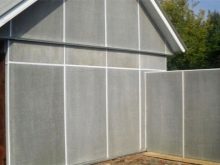Slate ACEID: what is it and how does it differ from a wave asbestos cement sheet?
The range of materials for construction is constantly growing, and the need for various high-quality new products is in demand by specialists, builders, vendors. However, the usual and long-known asbestos has become the basis for the production of the material, which today has the name slate ACEID.
a brief description of
Slate ACEID is an asbestos-cement electrical board with moisture resistance and electrical resistance. Its description and characteristics, stages of production and installation have their own characteristics. The long fibers of chrysolite and cement are pressed under very strong pressure, as a result, reinforced products get high strength. The thickness of the finished plate is different - from 6 mm to 40 mm. This material is used in various fields.It is often used in the construction of objects on the street due to its moisture resistance and resistance to the conduct of electricity. It is common in the construction of premises for livestock, suitable for concreting formwork, used in the construction of partitions.
Manufacturing technology of this slate makes it an ideal material for roofing. When painting the surface of ACEID, the plate does not lose its characteristic qualities. Strong heating does not cause ignition. It is very resistant to various damages and impacts. A load of 350–400 kilograms per square meter is permissible for different brands of ACEID, therefore partitions from the ACEID board will last more than a decade.
Installation is quite simple, however, it is forbidden to hammer nails into the ACEID sheet.therefore it is necessary to make special holes by drilling, after which to fix the board on the surface. It is possible to cut ACEID sheets in the same way as asbestos cement pipes, which are often used in country-house construction in the manufacture of chimneys, with an ordinary grinder, but it is better if the disc has a diamond coating.High strength and a small mass of products explain the high popularity among professionals in the construction of pipelines or industrial facilities, as well as in country and agricultural construction. It is not subject to rusting and rotting, the fungus also can not spoil it.
It is proved that the use of ACEID does not lead to the pollution of nature and the environment, the material does not emit harmful elements that pose a risk to human health. The approximate service life of ACEID boards is more than 50 years; moreover, this service life is the lowest. We can safely speak of him as about the material of the future.
Special features
ACEID is, first of all, a high-strength building material. It is used in construction, namely on objects where isolation from water, fire or electricity is required. ATSEID has many advantages, especially in comparison with similar materials, for example, before the usual asbestos cement wave sheet. Possessing such properties as heat, noise and electrical insulation this material is indispensable in the construction of industrial facilities. Giving the definition of ACEID slate, it should be said that this material is obtained by pressing cement with the addition of chrysolite fibers.In other words, the ATSEID sheet is an asbestos-cement electrical board with the highest density and strength indicators.
Properties
ACEID has several basic properties.
- Resistance to temperature extremes. This building material can be used in the zone of the Far North with extremely low temperature indices. In climatic zones, where sudden changes in temperature are possible, it is also indispensable. ACEID sheets are well tolerated and high temperature readings. These qualities allow it to be used both indoors and outdoors.
- High sound insulation. ACEID does not transmit noise. High levels of noise and sound insulation allow it to be used in the construction of various premises. Often, partitions are made of it or laid on a floor covering. Since the material is highly resistant, it is ideal for leveling the floor, because this is a flat sheet, it has an absolutely flat surface with high wear resistance and impact resistance.
- Electrical insulation. Sheet ACEID does not pass electric current. This quality makes it possible to use it on a large scale in production, for example, when constructing spark-proof partitions.The bases for transformers and various industrial electrical installations, the lining of induction furnaces are made of it.
- Water resistant. The ability to repel water makes it possible to use ACEID in the construction of irrigation canals, in agricultural facilities, in the construction of sanitary facilities (in large social premises).
- Fire resistance Often, this material is used to repair the roof, the arrangement of the roof and the manufacture of fences. It protects the object from fire, from the possible transfer of the flame. A fence made with the use of partitions from ACEID sheets will protect against fires, for example, from burning grass and will not allow the fire to penetrate beyond the fence.
- Environmental Safety. At observance of all rules at each stage of production, the output is an environmentally safe material that does not harm nature and human health.
- Ease of installation. When working with sheets of this material will require the usual tools available in the arsenal of any builder. The most commonly used ordinary grinder, sheets are easy to cut and sawn.And the surface can be treated with paint, often acrylic for additional protection against possible damage.
- Durability. With proper operation and use of this building material will last for decades. Often its service life is 50–60 years. Throughout the time of use all the properties described above are preserved.
disadvantages
However, some researchers talk about the shortcomings of the ACEID sheets due to the use of asbestos compounds in its production. Western countries completely abandoned the production and use of this material. In Europe, asbestos cement sheets are not used in construction and are not even produced. But this statement can be challenged, since, observing all the rules during production, the material is obtained environmentally safe. But, upon purchase, the consumer has the right to demand from the seller both sanitary-hygienic and quality certificates. You should not take cheaper counterparts that do not have certificates or manufactured on various specifications. And also one of the drawbacks is moss fouling. But today, this disadvantage is eliminated by treating the surface with primers and special compositions that repel moisture and enhance the durability of the material.
Dimensions
ACEID can be ordinary, roofing, medium wave and wavy. It is often manufactured as a wall reinforced profile. ACEID sheets are also divided into pressed and non-pressed. But, most importantly - the production should be made in accordance with GOST. The size range is various. Often used sheets of parameters such as 3500x1500 mm, 1500x1000 mm, 1750x1100 mm.
The dimensions of the ACEID sheet used for the construction of the roof are about 1750–2500 mm in length. Sheet thickness is 6–8 mm, width - 1200 mm. When comparing the ACEID sheet and the conventional profile, it should be noted that one ACEID sheet is sufficient to cover 1.5 m² of the roof, thereby avoiding joining as much as possible and making the coating hermetic. Reinforced profile sheets of a larger size, while the size of the wave sheet reaches a height of 45–54 mm.
Sheets of this material are the most durable in bending and heavyweight. Their weight reaches more than 40 kg. Although the installation of sheets of large weight is not always convenient and causes difficulties. The most used and universal option is the medium wave sheet. It is most often used in roofing and industrial production facilities, as well as in the construction of residential buildings.
What are the differences?
ACEID has greater strength and density compared with the wave asbestos cement sheet. Indicators vary almost 4 times. In addition, the comparison of durability is also not in favor of slate. This allows us to conclude that flat ACEID differs from wave slate in durability, strength, and reliability. ACEID sheets have differences in the degree of load. The following labels are on sale: ACEID 350, ACEID 400, ACEID 450, ACEID 500. Each type has its own characteristics of strength, density and maximum load. At each stage of construction, various sheets of different sizes are used, and the density depends on the conditions and requirements.
Key Applications
Roof covering, roofing work is the main area where asbestos cement sheet is used. This material is easy to install due to its composition, shape and structure. At arrangement of a roof with its use the maximum tightness is reached. This quality allows the use of ACEID in residential, industrial or warehouse construction. Do not think that sheets of the same type and gray. Due to the fact that the surface is easy to paint, it is possible the embodiment of various design ideas and decorative ideas.
ACEID sheets are often used in the construction of partitions in residential and industrial premises, in the construction of fences. ACEID sheets are lighter than concrete slabs and easier to install. Despite the ease of high noise and sound insulation allows you to build partitions in residential buildings. And the ability to not absorb and repel water, as well as electrical insulation, allow it to be used at production sites or for spark-proof surfaces. Irrigation systems, switchboards, electric furnaces often have ACEID sheets in their design. Ordinary people like to use ACEID on garden and backyard plots.
In addition, ACEID is much cheaper to use, unlike asbestos tiles or other roofing materials. It can be concluded that AECAID, due to its qualities, is a universal material in any field of construction. It can be used both by professional builders and ordinary people without special education in everyday and everyday affairs.
On how to cut a flat slate, see the following video.
